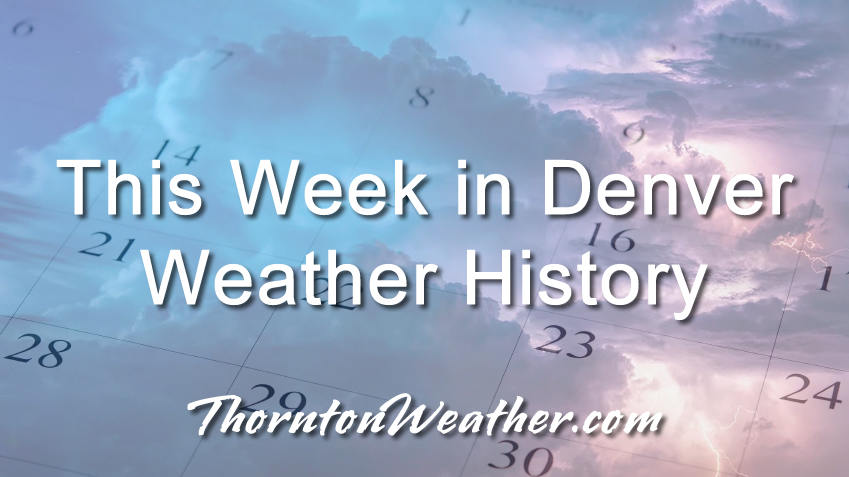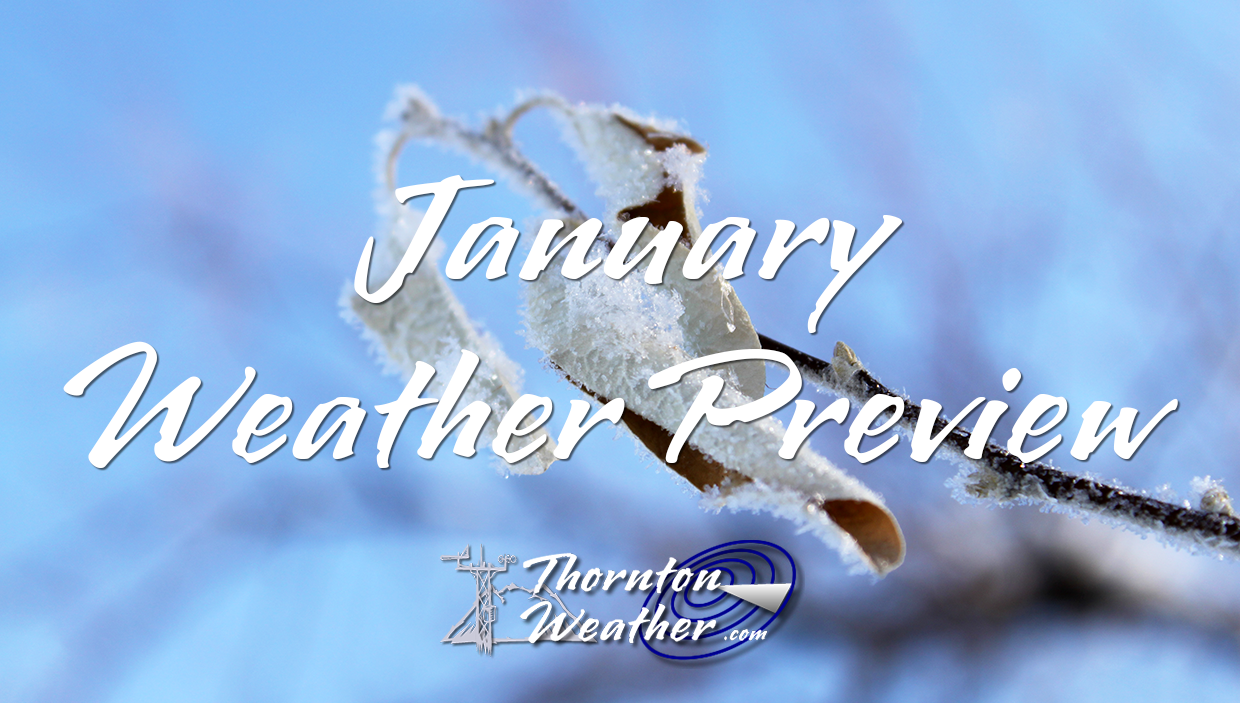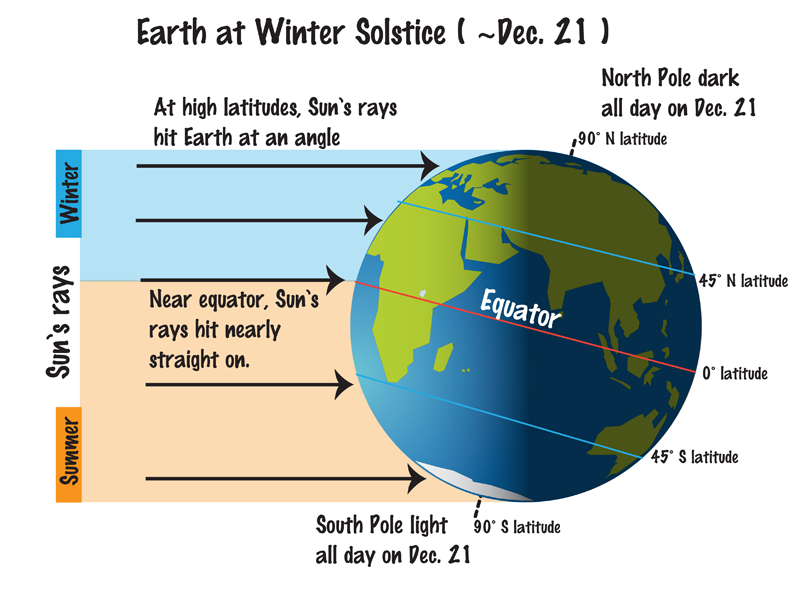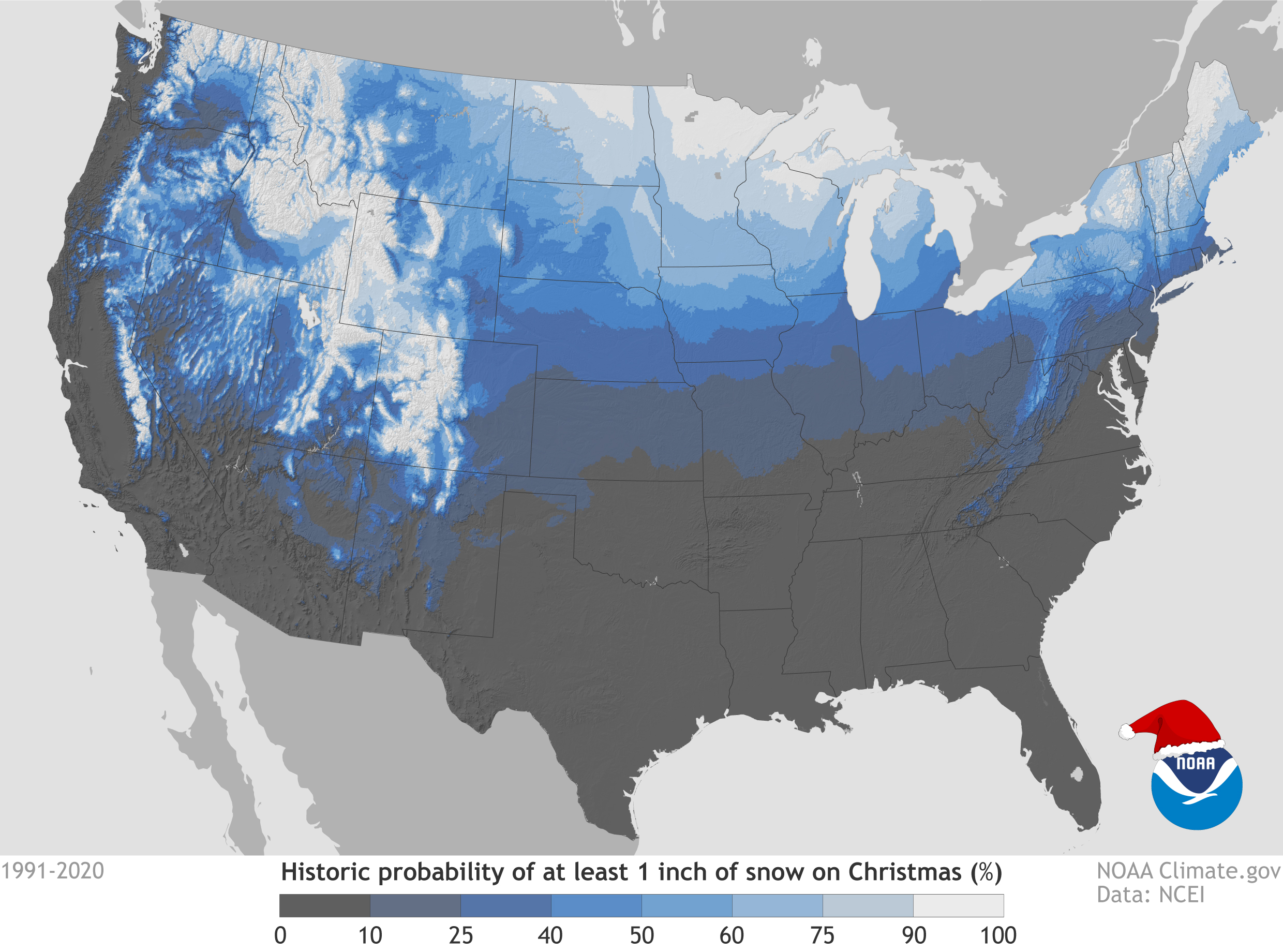
Powerful, damaging wind, deadly cold and monster snowstorms are the highlights of this week in Denver weather history.
From the National Weather Service:
12-15
In 1921…downslope Chinook winds produced warm temperatures in the city…which resulted in 4 temperature records. High temperatures of 72 degrees on the 13th and 68 degrees on the 15th were record maximums for the dates. Low temperatures of 47 degrees on both the 12th and 13th were record high minimums for the dates. West winds were sustained to 38 mph on the 12th and to 25 mph on the 13th.
14-15
In 1988…a snow storm again whitened metro Denver. Snowfall along the Front Range was in the 6 to 12 inch range. Snowfall totaled 5.8 inches at Stapleton International Airport where north winds gusted to 38 mph.
In 1990…high winds howled across metro Denver behind a strong pacific cold front. Boulder was hardest hit by the high winds. A wind gust to 120 mph was recorded in south Boulder where winds stripped the roof off a garage…a vacant gas station…and a house under construction. Elsewhere in Boulder…several trees were blown down. In Boulder canyon…the winds toppled two cinder block walls on a house under construction. Four Boulder County women were treated for injuries caused by the wind. The injuries were confined to a broken wrist…a mild concussion…bruises…and facial cuts. Two semi-tractor trailers were blown over by the fierce winds south of Boulder. Another truck rollover occurred southeast of Golden. Drivers of all three trucks suffered only cuts and bruises. Several vehicles were trapped in a blinding dust storm on the Denver-Boulder turnpike near Broomfield. Drivers were forced to stop along the highway for several minutes during the storm and witness their vehicles being pelted with sand and gravel. A wind gust to 97 mph was recorded in Golden. High winds were also reported in Arvada…Boulder…and Lakewood. Winds toppled a number of utility poles and wooden fences…blew out windows…and caused structural damage to a large apartment complex on the west side of Golden. Wind gusts of 70 to 100 mph caused considerable damage to several large billboards north of Golden…as well as damaging the paint…trim…and glass on numerous vehicles in the area. A west wind gust to 51 mph was recorded at Stapleton International Airport.
15
In 1999…high winds developed in and near the foothills as a strong upper level jet moved into the area. Although most wind gusts were in the 70 to 80 mph range…a weather spotter located 1 mile south of Fritz Peak near Rollinsville measured a peak wind gust to 124 mph. Other wind reports included wind gusts to 77 mph at the National Center for Atmospheric Research in Boulder and atop Blue Mountain and 70 mph at the national wind technology center on Rocky Flats south of Boulder. West winds gusted to only 32 mph at Denver International Airport.
In 2000…high winds developed in the foothills of Boulder County…but winds were strong across all of metro Denver. Winds gusted as high as 72 mph at the National Center for Atmospheric Research on the mesa just southwest of Boulder. West winds gusted to 44 mph at Denver International Airport.
In 2021…a powerful cold front moved across northern Colorado in the morning. Bands of moderate to heavy snow showers in the mountains resulted in early morning snow squalls. Colorado Department of Transportation had brief road closures along with parts of I-70 due to the limited visibility and hazardous road conditions that accompanied the snow squalls. Storm totals in the mountains generally ranged from 3.5 to 6.5 inches. As the cold front swept across the Front Range Foothills…Urban Corridor…and adjacent plains…very strong post-frontal or bora winds developed. The strongest wind gusts ranged from 70 to 95 mph occurred in and near the foothills…and along and north of the I-76 corridor. At Denver International Airport…a peak wind gust to 60 mph was observed from the northwest. There were overturned semis reported on I-25…and car window were blowing out in Boulder and Broomfield. Denver International Airport reported 2219 flight cancellations and 12327 delays. Xcel Energy power outages peaked at about 63000 customers during this high wind event. The high winds knocked down several trees… with blowing dust and reduced visibility northeast and east of Denver. Some trees reportedly crashed into nearby homes and onto parked vehicles.
15-16
In 1964…high winds raked metro Denver…causing considerable damage. Wind gusts to 81 mph were recorded at Rocky Flats northwest of Denver…94 mph at Jefferson County Airport near Broomfield…48 mph in downtown Boulder…and 70 mph in Littleton. West wind gusts to 67 mph were recorded at Stapleton International Airport. A man working on construction in downtown Denver died from injuries after being struck by a 5-foot by 8-foot section of plank runway blown by the strong winds. Several people were blown down by the strong winds or hit by flying objects. Buildings… Roads…trees…and power equipment were damaged. Roads were closed east of Denver due to blowing dust.
In 1981…wind gusts to 60 mph were common in the foothills northwest of Denver. West wind gusts to 47 mph were recorded at Stapleton International Airport where the visibility was briefly reduced to 3 miles in blowing dust.
In 1996…strong pre-frontal winds developed in the foothills of Boulder County ahead of an arctic cold front that moved into northeastern Colorado late on the morning of the 16th. Wind gusts of 70 to 75 mph were clocked at Table Mesa in southwest Boulder.
16
In 1912…northwest winds were sustained to 44 mph with an extreme velocity of 45 mph.
In 1921…north winds were sustained to 46 mph with gusts to 50 mph behind a vigorous cold front. Only a trace of snow fell.
In 1954…a vigorous cold front produced sustained north winds to 45 mph with gusts as high 54 mph. Visibility was reduced to 1 mile in blowing dust at Stapleton Airport.
In 1955…sustained west winds to 44 mph with gusts as high as 58 mph were recorded at Stapleton Airport.
In 1994…a wind gust to 108 mph was recorded atop Squaw Mountain west of Denver with a gust to 92 mph in Rollinsville southwest of Boulder. West winds gusted to 48 mph at Stapleton International Airport.
In 1996…a vigorous arctic cold front moved across metro Denver. Heavy snow and strong winds accompanied the front as near whiteout conditions in snow and blowing snow developed suddenly. Northerly winds gusted from 40 to 60 mph behind the front. Dozens of accidents occurred as roads and highways quickly turned to a glaze of ice. Snowfall amounts ranged from 4 to 6 inches across metro Denver and in the foothills. The exception was at Eldorado Springs south of Boulder where 8 inches of new snow were measured. Snowfall totaled only 1.8 inches at the site of the former Stapleton International Airport. Officially…this was the only measurable snow of the month in Denver. At Denver International Airport…north winds gusted to 34 mph.
In 1999…another brief round of high winds developed in and near the foothills of Boulder County. Peak wind gusts included 83 mph at the National Center for Atmospheric Research near Boulder and 74 mph atop Niwot Ridge and at the National Wind Technology Center on Rocky Flats south of Boulder. West winds gusted to only 33 mph at Denver International Airport where the temperature warmed to a high of 54 degrees.
In 2000…high winds in the mountains spread into the foothills west of Denver. Winds gusted to 87 mph at Georgetown Lake and at the National Center for Atmospheric Research in Boulder. Winds gusted to 72 mph at the national wind technology center south of Boulder.
16-17
In 1908…heavy snowfall totaled 7.9 inches in downtown Denver where north winds were sustained to 20 mph on the 17th. Temperatures were in the teens and 20’s.
In 1939…low temperatures of 49 degrees on the 16th and 43 degrees on the 17th were record high minimums for the dates. High temperatures of 65 on the 16th and 72 on the 17th were not records.
In 1980…Chinook winds blew through the night in Boulder with a peak reported gust to 75 mph. Northwest winds gusted to 30 mph at Stapleton International Airport on the 17th. The strong Chinook winds warmed temperatures to record daily highs of 70 degrees on the 16th and 73 degrees on the 17th.
In 2016…the presence of a warm and moist southwesterly flow aloft…overrunning an Arctic airmass with shallow post frontal upslope produced a band of very heavy snowfall across the Denver metro area. The enhanced band of heavy snow extended west into the Front Range mountains and foothills with snowfall rates up to 2 inches per hour. Multiple accidents occurred during the evening hours of the 16th as the snow quickly piled up. Three hundred flights were canceled at Denver International Airport as the winter storm moved through the Denver metro area early morning hours of the 17th. Storm totals in the Front Range mountains and foothills included: 16 inches at Loveland Ski Area; 12 inches near Conifer…11 inches at Winter Park Ski Area…10.5 inches at Bergen Park… 10 inches at Echo Lake…with 9.5 inches at Aspen Springs and Evergreen. In and around metro Denver…storm totals included: 11.5 inches in Wheat Ridge…11 inches in Arvada… 9 inches near Morrison…8 inches at Denver International Airport…Denver/Stapleton…Marston Reservoir and Ralston Reservoir; 7.5 inches in Westminster; 6.5 inches…5 miles northeast of Westminster; 6 inches in Aurora…5 miles west-northwest of Brighton…Englewood and near Louisville.
17
In 2000…high winds gusting from 60 to 74 mph howled across the northeast plains of Colorado. In Parker where winds gusted to 60 mph…a 20-foot by 40-foot piece of roof was ripped from a building. West winds gusted to 53 mph at Denver International Airport. This was the highest wind gust of the month at the airport. An intense…but very localized wind gust to 112 mph was measured near Georgetown lake in the foothills west of Denver.
17-24
In 1924…a prolonged cold spell occurred after mild temperatures during the first half of the month. Most low temperatures dipped below zero with the coldest reading of 15 degrees below zero occurring on the 24th. The high temperature of only 5 degrees on the 18th was a record low maximum for the date.
18
In 1901…north winds were sustained to 52 mph with gusts to 58 mph behind an apparent cold front.
In 1973…a brief blizzard dumped heavy snow across metro Denver. Snowfall totaled 9.2 inches at Stapleton International Airport where north winds gusting to 53 mph produced much blowing snow. The storm forced many schools and businesses to close.
In 1996…a homeless man in Denver was found unconscious in his car suffering from exposure. The man’s body temperature was only 85 degrees when he was discovered. He died several hours later. Early morning temperatures had dipped to 9 degrees below zero.
In 1999…high winds were reported for a brief time in the foothills. Winds gusted to 72 mph in Golden Gate Canyon and to 71 mph at the National Center for Atmospheric Research in the foothills southwest of Boulder. West winds gusted to only 39 mph at Denver International Airport where the temperature warmed to a high of 53 degrees.
In 2002…only a trace of snow fell at the site of the former Stapleton International Airport. This…along with the trace of snow on the 5th…was the only snow of the month…ranking the month the 2nd least snowiest on record.
18-19
In 2012…a storm system brought moderate to heavy snow to the mountains and foothills west of metropolitan Denver and blizzard conditions to plains east of Denver metro area. The combination of snow and wind reportedly reduced visibility to just a few hundred feet at times…and resulted in several road closures including interstate 70 east of Aurora. East of Denver gusty northerly winds ranged from 35 to 55 mph produced extensive blowing and drifting snow…ranging from 1 to 4 feet in depth. Storm totals ranged from 3 to 5 inches. In the mountain and foothills…the heaviest snowfall occurred along and north of I-70 and included: 12 inches at Genesee…9 inches near Eldorado Springs; 8.5 inches at Coal Creek Canyon…8 inches near Evergreen…with 6 inches at Eldora Ski Area…Idaho Springs…Gross Reservoir and Nederland. At Denver International Airport…1.7 inches of snowfall was observed. In addition…a peak wind gust to 35 mph was observed from the north on the 19th.
18-21
In 2010…a winter storm produced a 4-day period of moderate to heavy snow in the mountains. The combination of strong wind and heavy snow forced the closure of several mountain passes due to the threat of avalanches. The Amtrak train route… Which runs from Denver to California…was rerouted through Wyoming when Union Pacific closed its tracks along interstate 70. Numerous accidents forced the closure of I-70 at times. The wind gusted to 60 mph over the higher mountain passes. Storm totals in the ski areas west of Denver ranged from 16 to 32 inches.
18-24
In 1998…a vigorous cold front with north winds gusting as high as 38 mph at Denver International Airport on the 18th dropped temperatures from a high of 51 degrees to a low of just 6 degrees before midnight. The arctic air mass that settled over metro Denver produced intermittent light snow and a week-long protracted cold spell that caused low temperatures to plunge well below zero for 6 consecutive nights. The coldest temperature was 19 degrees below zero on the morning of the 22nd. High temperatures climbed only into the single digits on 4 consecutive days…from the 19th through the 22nd. At least 15 people…mostly homeless… Were treated for hypothermia at area hospitals. The bitter cold weather was responsible…either directly or indirectly… For at least 5 fatalities. Three of the victims died directly from exposure. The cold weather also caused intermittent power outages. Following the cold snap… Thawing water pipes cracked and burst in several homes and businesses…causing extensive damage. Only one temperature record was set. The high temperature of only 7 degrees on the 19th set a record low maximum for the date.
Continue reading December 15 to December 21: This Week in Denver Weather History →







































































